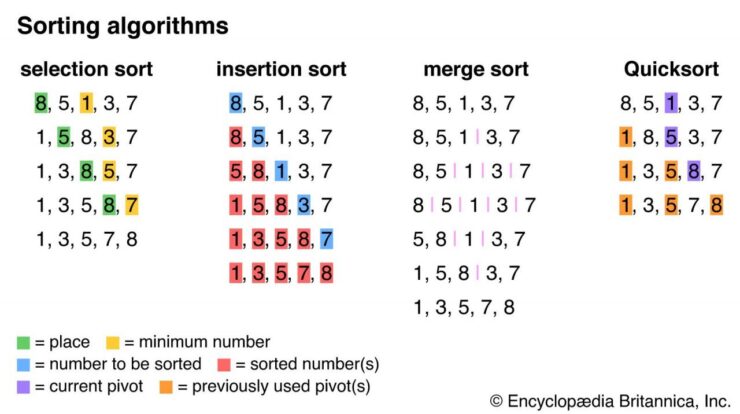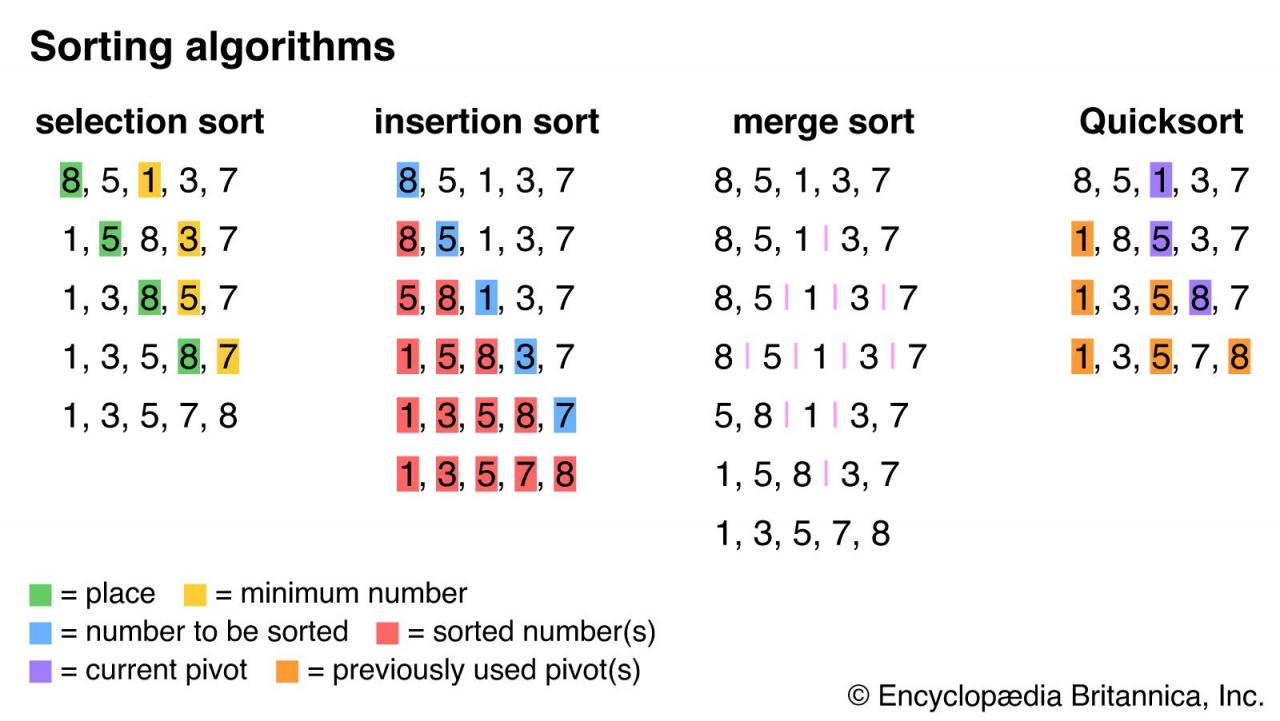
In the realm of data management, the concept of sorting holds paramount importance. Sort definition, a fundamental operation, involves arranging data elements in a specific order, enabling efficient retrieval and organization. This comprehensive guide delves into the intricacies of sorting, exploring its types, algorithms, applications, and underlying data structures.
From the etymology of the term “sort” to the nuances of various sorting techniques, this discourse unveils the significance of sorting in diverse fields, from data science to everyday life.
Definition of Sort: Sort Definition

A sort is a process of arranging elements of a list or an array in a specific order. It is a fundamental operation in computer science and is used in various applications to organize and manage data efficiently. The term “sort” can have different meanings and is used in various contexts, depending on the field of study or application.
The word “sort” is derived from the Old French word “sorte,” which means “fate” or “lot.” In mathematics, sorting refers to arranging elements in numerical or alphabetical order. In computer science, sorting algorithms are used to organize data in a specific order, such as ascending or descending order, based on a specified key or field.
Types of Sorts, Sort definition
- Bubble Sort:Compares adjacent elements and swaps them if they are in the wrong order. It repeatedly passes through the list until all elements are sorted.
- Insertion Sort:Inserts each element into its correct position in the sorted portion of the list. It is efficient for small lists and nearly sorted lists.
- Selection Sort:Finds the minimum element from the unsorted portion and swaps it with the leftmost unsorted element. It repeats this process until the entire list is sorted.
- Merge Sort:Divides the list into smaller sublists, sorts them recursively, and then merges them back together. It is a stable and efficient sorting algorithm with a time complexity of O(n log n).
- Quick Sort:Selects a pivot element, partitions the list into two sublists based on the pivot, and recursively sorts the sublists. It has a time complexity of O(n log n) on average but can be O(n^2) in the worst case.
- Heap Sort:Builds a binary heap data structure from the list and repeatedly extracts the maximum element from the heap, which results in a sorted list. It has a time complexity of O(n log n).
- Radix Sort:Sorts elements by their individual digits or bits. It is particularly efficient for sorting large numbers of integers.
Sorting Algorithms
Sorting algorithms are designed to sort elements in a specific order, such as ascending or descending order. The choice of sorting algorithm depends on factors such as the size of the list, the type of data being sorted, and the desired time and space complexity.
Some commonly used sorting algorithms include:
- Bubble Sort:Simple and easy to implement, but has a time complexity of O(n^2).
- Insertion Sort:Efficient for small lists and nearly sorted lists, with a time complexity of O(n^2).
- Selection Sort:Simple and easy to implement, but has a time complexity of O(n^2).
- Merge Sort:Stable and efficient, with a time complexity of O(n log n).
- Quick Sort:Efficient on average, with a time complexity of O(n log n), but can be O(n^2) in the worst case.
- Heap Sort:Efficient and versatile, with a time complexity of O(n log n).
- Radix Sort:Efficient for sorting large numbers of integers, with a time complexity of O(nk), where k is the number of digits or bits.
Applications of Sorting
Sorting is a fundamental operation used in various applications across different industries and domains. Some common applications of sorting include:
- Data Management:Organizing and managing large datasets for efficient retrieval and analysis.
- Databases:Sorting data in databases to optimize query performance and data retrieval.
- Algorithms:Sorting is used as a subroutine in many algorithms, such as searching and optimization algorithms.
- Machine Learning:Sorting is used in machine learning algorithms for data preprocessing, feature selection, and model training.
- Financial Analysis:Sorting financial data to identify trends, patterns, and outliers.
- Logistics and Supply Chain Management:Sorting items for efficient inventory management and order fulfillment.
- Data Visualization:Sorting data to create meaningful visualizations and charts.
Data Structures for Sorting
Data structures play a crucial role in optimizing the performance of sorting algorithms. Some commonly used data structures for sorting include:
- Arrays:Simple and efficient data structure for storing and accessing elements. They are commonly used for in-place sorting algorithms.
- Linked Lists:Dynamic data structure that allows for efficient insertion and deletion operations. They are useful for sorting algorithms that require frequent element movement.
- Binary Trees:Hierarchical data structure that can be used for efficient sorting and searching operations. They are commonly used in algorithms like quicksort and heapsort.
- Hash Tables:Data structure that uses key-value pairs for fast lookup and retrieval. They can be used for sorting algorithms that require fast access to elements based on their keys.
Final Thoughts

In conclusion, sort definition serves as a cornerstone of data management, providing a systematic approach to organizing and manipulating data. Its versatility extends across a wide spectrum of applications, empowering users to harness the full potential of their data.
Essential Questionnaire
What is the primary purpose of sorting?
Sorting aims to arrange data elements in a specific order, facilitating efficient retrieval, organization, and analysis.
How many types of sorts are there?
There are numerous types of sorts, each tailored to specific data characteristics and requirements.
What are the key factors to consider when choosing a sorting algorithm?
Efficiency, complexity, and data size are crucial factors to evaluate when selecting a sorting algorithm.
How do data structures impact sorting performance?
Data structures play a significant role in optimizing sorting algorithms, influencing their speed and efficiency.





